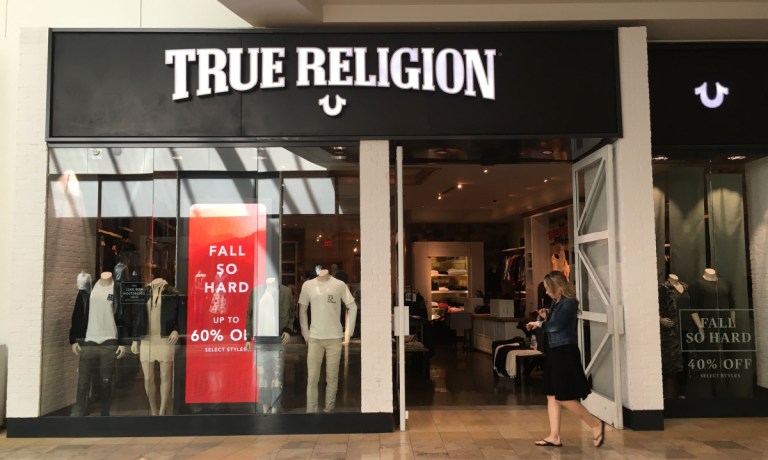
Once seen as a symbol of luxury and style, True Religion soared to fame in the early 2000s with its unique horseshoe logo and fancy stitching on back pockets. Loved by celebrities and fashion fans, it was the go-to brand for high-end denim. But after a while, the hype dwindled, leading to True Religion filing for bankruptcy in 2017.
Fast-forward to 2024, the brand is adopting a new strategy, breaking away from the confines of denim and diversifying its product offerings with ventures such as a pet line. The aim is to reach a broader audience and reestablish itself as a vital and sought-after staple in the world of apparel.
True Religion Chief Marketing Officer Kristen D’Arcy discussed in an interview with PYMNTS how the brand is focusing on what customers want in 2024.
“We are much more of a lifestyle brand,” said D’Arcy.
On that note, D’Arcy said while True Religion’s signature envelope tee remains a staple and maintains its popularity, the brand has expanded beyond its classic offerings to include fashion-oriented elements, with strong categories in activewear, varsity jackets, women’s baby tees, fleece and even a pet line — more on that later.
While the brand has expanded its assortment, D’Arcy notes that True Religion has also leaned into collaborations, which have now become a key strategy for the brand. These collaborations include team-ups with influencers and designers.
D’Arcy highlights collaborations with Sebastian AMI, a high-end menswear label with a gender-neutral approach, last year for a capsule collection, and another collection with artist Blu Boy to incorporate his trademarked custom patchwork designs.
“I think that’s where we’re able to infuse an even further inject freshness, to drive new customer acquisition to the brand,” she said.
D’Arcy also said 2024 will be a year True Religion leans into influencer relationships, ranging from macro to micro influencers, who can authentically weave in the brand to their daily lives.
“We will tap into our influencer community, looking at people that we’ve worked with and who seemed to just love the brand,” she said.
In addition to its diversified product lineup and efforts to team up with influencers to create deeper relevancy, True Religion is also looking to offer consumers more budget-friendly prices compared to those in 2005. Today, prices typically falling within the $100-$200 range can be found in nearly 50 of the brand’s stores, including its own outlets across the country and through select wholesale partners such as Urban Outfitters and others.
D’Arcy said customers have provided positive feedback, commending the brand’s quality, value and fashion appeal. Recounting a recent review, she said, “I’m a little shy and I know when I walk into a room and I’m wearing True Religion, I know it speaks for itself.”
The brand is aiming for that quality with its newest offering: pet fashion.
“A couple of years ago when we thought about transforming ourselves more into a lifestyle brand, we thought ‘how about pets?’ It was definitely the right decision,” said D’Arcy.
The global pet care market is expected to reach $368.88 billion by 2030. With that in mind, True Religion is launching its first pet line this spring and another in the fall. The collection will feature items like pet apparel, beds, toys, collars, leashes, harnesses and cold-weather accessories.
D’Arcy says what is special about this collection is its design philosophy. True Religion believes in the power of clothes to make a statement on their own. The pet line takes inspiration from elements that customers love in the regular fashion line, such as bold colors, unique stitching, denim and its signature crystals. Now customers can outfit their furry companions in pieces that mirror styles they might choose for themselves.